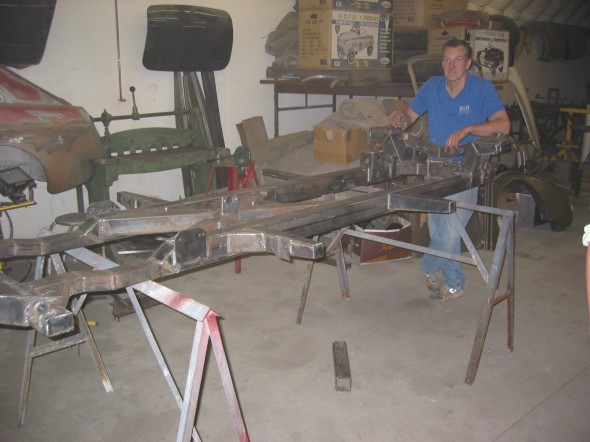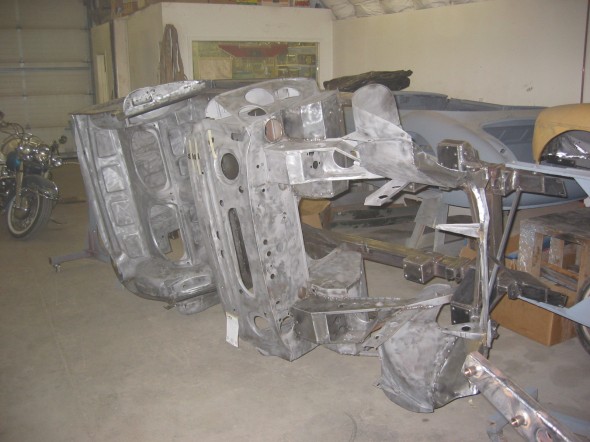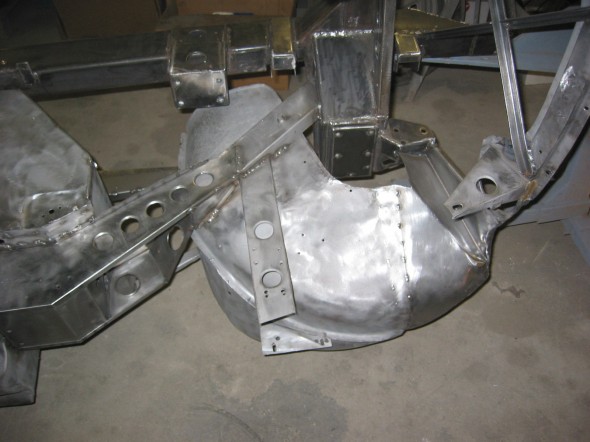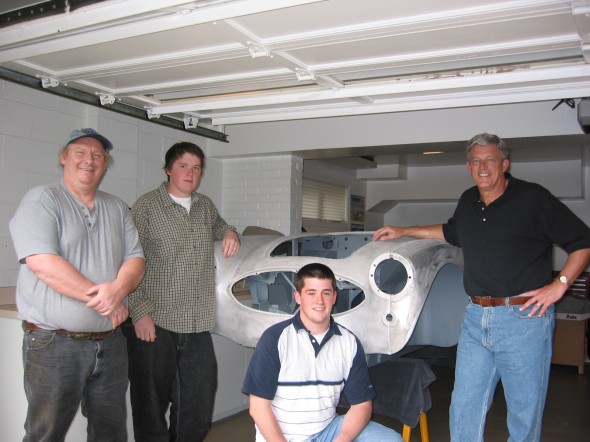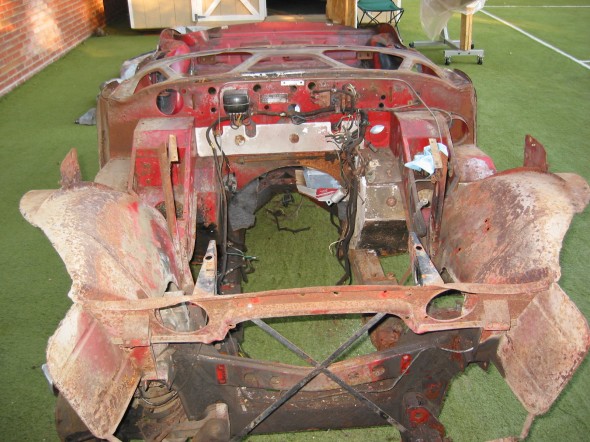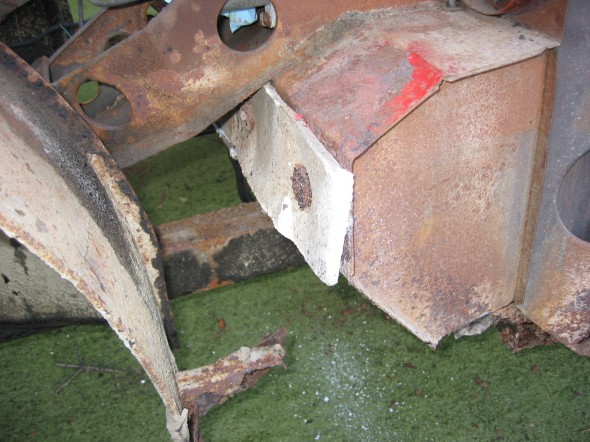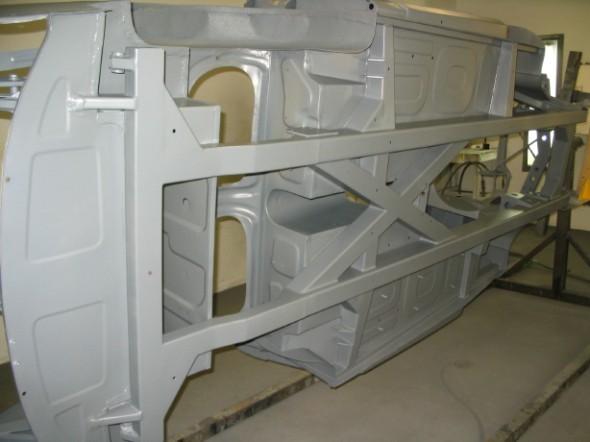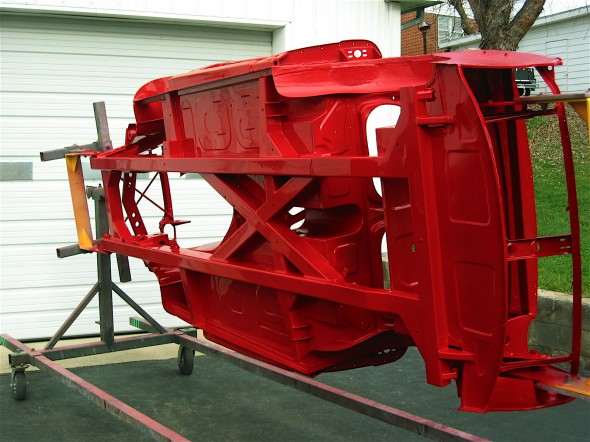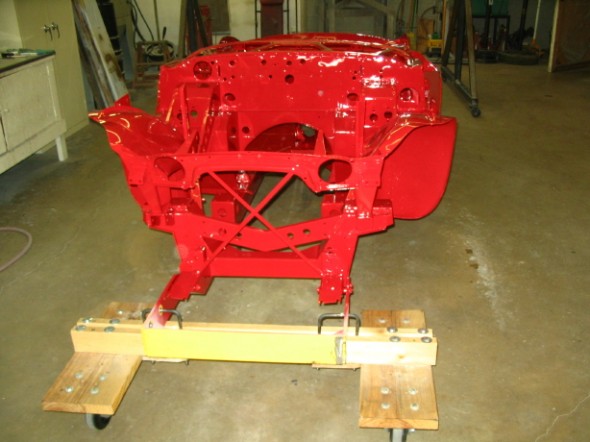The Original Chassis/Frame
The car’s chassis had been lengthened for the rear seats in the production of the 100 six BN4. Other than the change for disc brakes, there were no significant changes for the 3000. 100-6_3000 ChassisDesign.
Modified Chassis/Frame
Storage in damp surroundings plus over forty years of life left BT7 L4422 with substantial rust and corrosion. It was a difficult decision, but since I was building a “driver”, I decided to use Martin Jansen’s Jule Enterprises frame. My sons and I visited Martin’s shop just outside Toronto, Canada before making the final call. http://www.jule-enterprises.com/Martin is a great fellow with whom to work. He and Don Stewart substituted Martin’s new frame for mine and reinstalled the tub superstructure, including the replacement of several panels such as the floors in the interior and in the boot.
The Jule frame uses 1/8″ wall by 3″ x 4″ steel rectangular tubing for the frame rails. The frame has a static bending strength 40 percent greater than the original, reducing frame deflection. Torsional strength of the Jule replacement is a 140 percent improvement over the original. The downside of the modern substitute is 80 additional pounds: 135 vs. 215 lbs. http://www.jule-enterprises.com/wp-content/uploads/2012/07/asurefoundation.pdf
The purists ( I don’t use that term in a disparaging way at all), will not like Marty’s frame, and the hobbyist may be confounded by finding the proper alignment of mounting holes in the frame or in replacement superstructure panels; but, it is hard to dispute the improvement in ride quality. My car is now rock solid, no creaks and twists, just great handling with a firm solid ride!

